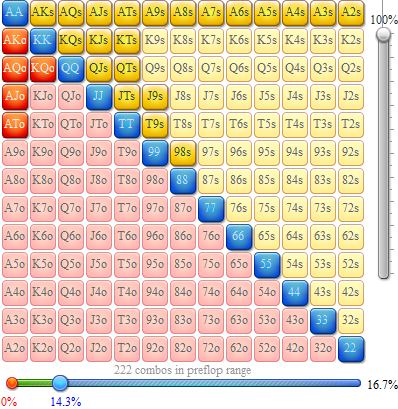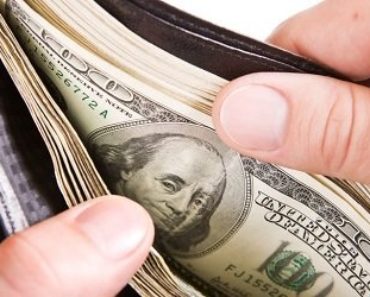Ever watched someone bink a big tournament for six figures and thought, “Man, maybe I should take tournaments more seriously”? You’re not alone. Poker tournaments have a certain magic to them—small buy-in, huge prize pool, potential life-changing score. But here’s the real question: are poker tournaments actually profitable?
Let’s break it all down—the upside, the downside, the math, and what the pros are doing differently—so you can decide whether grinding MTTs (multi-table tournaments) is right for you.
🎲 How Poker Tournaments Actually Work
Unlike cash games, poker tournaments have a fixed buy-in and a fixed payout structure. Everyone starts with the same amount of chips, and as players are eliminated, the blinds increase, and the field gets smaller until someone takes it down.
Here’s what you need to understand from a profitability standpoint:
-
Buy-in: This is your entry fee, often shown as something like $10 + $1. The “$1” is rake.
-
Prize pool: All the buy-ins (minus the rake) go into a pool that's paid out to the top 10-15% of finishers.
-
Top-heavy structure: Most of the money goes to the final table, and the lion’s share goes to the winner.
That means just “min-cashing” a bunch of events usually won’t cut it long term. You need to run deep, and ideally, win some.
🔗 Want to learn more about poker formats? Check out Types of Poker Games
💸 What Is ROI and Why It Matters
In cash games, you can talk about win rate in big blinds per 100 hands. In tournaments, we use ROI—Return on Investment.
Formula:
ROI = (Total Winnings – Total Buy-Ins) / Total Buy-Ins
So if you spend $1,000 on buy-ins and win $1,200 total, your ROI is 20%. Not bad.
The big takeaway? Even winning players often have modest ROIs—especially at higher stakes or in tough fields. A 10-20% ROI in tournaments is quite good. That means for every $100 you play, you might profit $10-$20 in the long run.
✅ The Upside: Why Tournaments Can Be Profitable
Let’s not forget why so many people love MTTs in the first place. There’s a lot to like.
-
Low investment, big potential rewards – You can turn $11 into $5,000 or more in a single night.
-
Soft fields – Especially at the micros and low stakes, many players are making huge strategic errors.
-
Bounties – In progressive KO formats, you can make money even without a deep run.
-
Satellites – Win your way into a $1K event for $5.
-
Variance can help – You can run hot for a month and bank a huge ROI (though don’t count on it).
But these upsides come with a flip side…
⚠️ The Downside: Swings, Variance & Mental Warfare
This is the part that doesn’t make the highlight reels.
-
Variance is brutal: You can play great for 100 tournaments and still end up losing money.
-
Massive downswings: It’s common to go 20, 30, even 50+ tournaments without a final table.
-
Bankroll stress: If you’re under-rolled, you’re playing scared… or busting.
-
Time sink: Most tourneys take hours—and if you bubble (i.e. bust just outside the money), that’s hours for nothing.
-
Mental game: Repeated coolers, bubbles, and suck-outs test your tilt control.
🔗 Want to see how variance plays out? Try the Variance Simulator on the site—it’ll open your eyes.
🔍 What Winning Tournament Players Do Differently
If you’re wondering how pros actually make money in tournaments, here’s a peek behind the curtain.
🧠 1. They Study. A Lot.
-
They run sims, review ICM spots, and study final table play.
-
Tools like ICMIZER, DTO, or GTO Wizard are common.
📈 2. They Track Everything
-
Every buy-in, cash, and bust-out goes into tracking software.
-
Over hundreds or thousands of games, they know their actual ROI.
🕓 3. They Choose the Right Games
-
Pros avoid reg-infested MTTs and target softer ones at good times.
-
They play peak hours where more recreational players are online.
💼 4. They Get Staked or Sell Action
-
To reduce risk, many pros don’t play on their own dime.
-
Swapping and selling pieces is standard at higher buy-ins.
🔗 Want to learn from the best? Check out Raise Your Edge Tournament Masterclass
🎯 What to Expect as a Beginner
Let’s be real—when you're starting out, you’re probably not going to win a bracelet next week.
-
Typical beginner ROI: Anywhere from -30% (learning) to break-even.
-
After some study and volume: A consistent +10% ROI is solid.
-
To get consistent profits: You’ll likely need to play hundreds of tournaments.
Here’s where most beginners go wrong: they expect short-term results. Tournament profitability should be measured in months—or even years—not days.
🥊 MTTs vs. Cash Games: Which Is More Profitable?
Quick comparison for those weighing their options:
| Tournaments | Cash Games | |
|---|---|---|
| Variance | High | Low to medium |
| Time ROI | Low unless deep run | High (you can leave any time) |
| Profit Potential | High ceiling | Steady grind |
| Edge Required | Lower at micros, higher later | More technical skill needed earlier |
| Mental Game | Tested in swings and ICM spots | Tested in long grind sessions |
🔗 Dive deeper with Advanced Cash Game Strategy
✅ So… Are Poker Tournaments Profitable?
Here’s the honest answer:
Yes, poker tournaments can be profitable—but only for disciplined, patient players who put in the work.
If you treat tournaments like a hobby, expect hobby-level results. If you treat it like a second job, track your play, study ICM, manage your bankroll, and grind consistently? Then yes—MTTs can absolutely be profitable.
For many, that first four-figure score is just one deep run away.
📌 Final Thoughts
If you’re serious about improving, start with:
-
A solid bankroll plan (think 100+ buy-ins for your level)
-
Low-stakes tourneys with soft fields
-
Studying push/fold ranges and ICM spots
-
Playing when the games are soft (evenings/weekends)
-
Tracking your ROI with a spreadsheet or tool
🔗 Want to up your game? Visit our Poker Training Sites page for the best courses to learn from.



